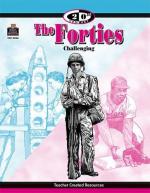|
This section contains 1,723 words (approx. 6 pages at 300 words per page) |

|
Transition.
The 1940s were a decade of profound change at all levels of American education. Primary and secondary education, for the most part under-funded, poorly organized, and inefficient, became more standardized, better organized, and properly funded. Higher education, divided between progressive educational advances and the lingering traditions of nineteenth-century "gentleman's" education, became definitively modern. The new university offered students unprecedented social and academic freedom, restructured its pedagogy to emphasize the sciences, professionalized its humanities curriculum, and integrated its activities with government and industry. American education was in a decade of transition, well on its way to becoming standardized, professional, scientific, and national.
World War II.
The major catalyst for these changes was World War II. The war exposed the deficiencies of American education. Millions of draftees were rejected by the army because they were illiterate, and as the army inducted men from around the nation, the degree of...
|
This section contains 1,723 words (approx. 6 pages at 300 words per page) |

|



